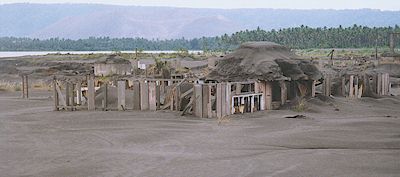|
|
|
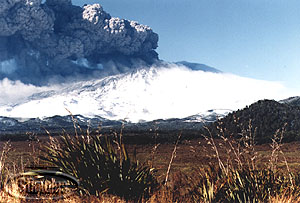 |
|
|
|
 |
Different kinds of eruptions cause different dangers.
PYROCLASTIC FLOWS AND SURGES
If there is a pyroclastic flow, when
gas and lava is exploded out sideways at speeds of over
200kph, anyone in the way will be most unlikely to survive.
Those who are lucky enough to survive will be badly hurt.
The best protection is to evacuate
(leave) the area before the eruption becomes
serious.
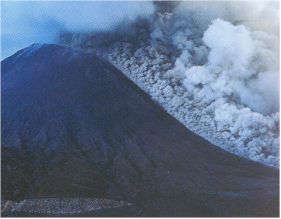
LAVA FLOWS
Lava flows are streams of molten rock
that travel down the slopes of volcanoes. They seldom kill
people because they move very slowly. Lava flows will causes total
destruction of buildings and anything in their
path. This house in Hawaii is burning
because a lava flow has reached the house.
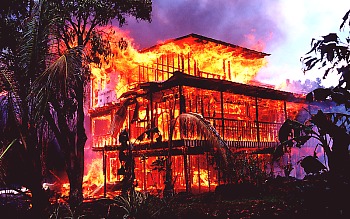
LAHARS
Lahars are "mudflows", mixtures of
volcanic ash, blocks and water, formed on volcanoes. Lahars
can start from a crater lake, a dam collapse or heavy
rainfall washing ash from the slope of a volcano. People caught in the path of a lahar
are often crushed, drowned or suffocated. One of New
Zealand's worst disasters was in December 24, 1953. 151
people died when a lahar washed out a bridge and the
Auckland-Wellington express train fell into the river.
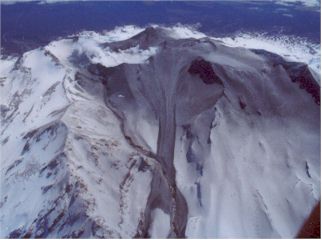
VOLCANIC GASES
Volcanic gases are mainly steam,
followed by carbon dioxide and smaller amounts of sulphur
and chlorine compounds. Dangerous concentrations of gases are
present only very close to the crater (within 1 -2 km). That
is why scientists often wear masks when they are working
close to a vent. Away from the vent gases are only
uncomfortable and a nuisance. If you have been to Rotorua, you will
recognise the smell of sulphur - it smells like rotten
eggs!
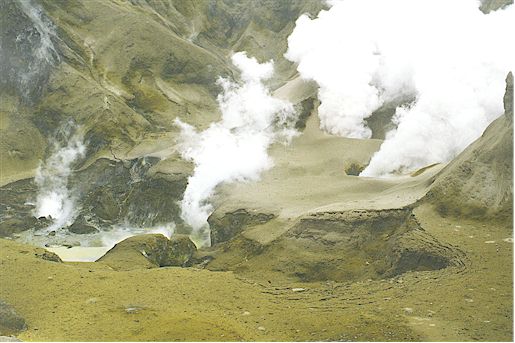
LANDSLIDES (DEBRIS AVALANCHES)
A debris avalanche is the sudden
landslide from an unstable side of a volcano. Many volcanic
cones are steep sided because of the rapid growth of the
cone. Rising magma, earthquakes, and heavy
rain can start a debris avalanche of this unstable material.
It follows valleys as it moves down the side of the volcano.
This photo shows the landslide
pouring out into the sea.

TSUNAMI
Tsunamis are huge sea waves caused by
disturbances on the sea floor. They can be produced by
earthquakes, by debris avalanches and by underwater volcanic
eruptions. A number of waves may be produced and
they may travel long distances. They can be hundreds of feet
high, and they destroy everything in their path. If people are caught in a tsunami,
they will be killed. The only way to survive is to evacuate
(leave) the area if there is a tsunami warning.
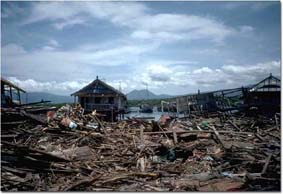
ASH FALL
When a lot of ash is produced from a
volcanic eruption, it falls over a wide area, like
snow. If there are buildings in the area,
it can build up so much that the roof collapses. People
usually have enough time to leave the area if the ash fall
is getting too heavy. It is hard to breathe properly in an
ash fall, and people have to stay inside.
